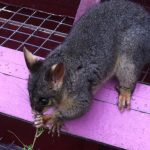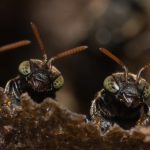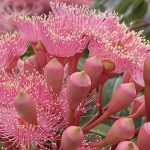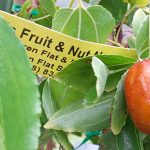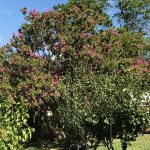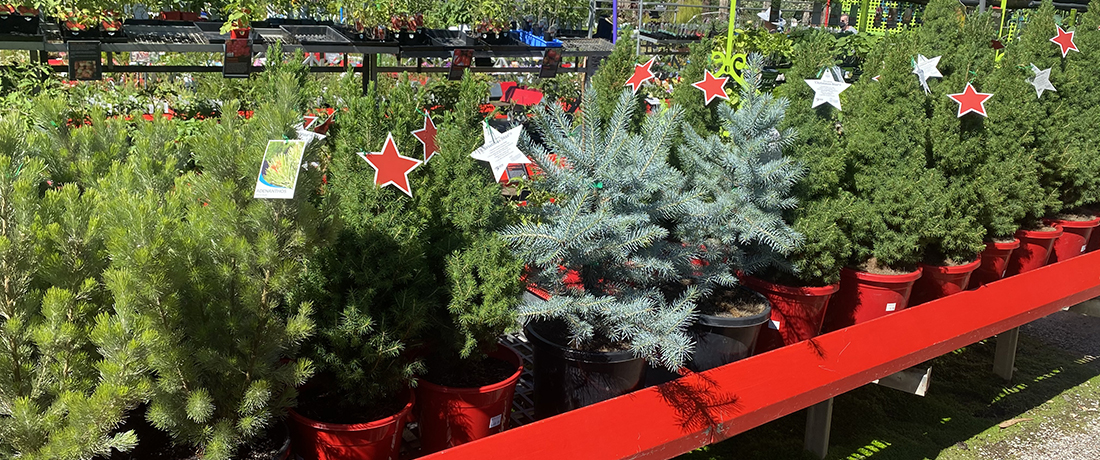
You will often hear lively discussions about the benefits of Live v Cut v Fake Christmas Trees. So which is the most environmentally friendly? If you Google the topic you will be inundated with hundreds of pages of research, but here’s a brief summary for those of you wanting the basic facts.
Potted Living Trees
These are the most environmentally friendly option. BAAG’s potted Christmas Trees are Picea glauca and Picea pungens. Or if you’re in the mood for a Christmas tree that’s a little bit different, why not pick up about an Adenanthos sericeus “Silver Streak”? They’re similar to traditional Christmas trees, only a little more sun-kissed and a lot more Australian.
If you re-pot them into a larger terracotta pot or wine barrel they will live quite happily in your backyard for many years as long as you make sure they don’t dry out in the hot weather. Your children can form an attachment to the tree, providing yet another way to get them interested in gardening. My daughter loves looking after her Christmas tree throughout the year, it is her job to water it and weed the pot. She has named it Phillip.
Keep in mind… They start out quite small, but in a couple of years you will be amazed how they can fill up and out. They are very easy to prune to shape. They don’t have that ‘Cut Tree’ pine smell that so many people love, however you can easily cheat by burning some essential oils.
Cut Christmas Trees
The initial reaction to cut trees is that it must be bad for the environment to cut down a tree for such a short period of use. There are however a few other factors to keep in mind.
There’s no denying cut trees look and smell great. That pine smell just shouts Christmas. During their lifespan the trees will sequester carbon as they are growing, which helps to offset the emissions associated with their harvesting and transport. The trees are all grown for the express purpose of ending up as cut trees, so it isn’t quite as bad as tramping into the bush and removing a native eucalypt. When the tree is harvested, generally at least one tree will be planted in its place. A lot of these plantation Christmas Trees are also grown on land that is unsuitable for other farming. They can be mulched / composted when the season is over.
Keep in mind… Even though the inputs are minimal, seasonal and yearly fluctuations in weather and other conditions mean that herbicides, pesticides and additional water may be used. To our knowledge there are currently no Certified Organic Christmas Tree growers in Victoria. (Please let us know if this is not the case!) Cut Trees need to be transported every year (both to the retailer, and then by the customer) as opposed to just once with a living tree. They also drop pine needles everywhere!
Fake Trees
A common argument for fake trees is that you only need to buy one that will last you for years. Back in the good old days you would probably get 10 years out of a tree. In this wondrous age of ‘produce the cheapest rubbish possible’, you may not get such a good run. Studies have shown that you would need to keep a fake tree for 20 years for it to be a better environmental option than a cut tree. Some fake trees are going to have less impact environmentally, but we don’t claim to be experts in the Fake Christmas Tree field, so we would simply encourage you to do as much research as you can, and maybe think about more expensive options made locally where you can at least get accurate information on their production.
Keep in mind… Fake trees are generally made from polyvinyl chloride (PVC), a non-renewable, petroleum-derived plastic. Several known carcinogens, including dioxin, ethylene dichloride and vinyl chloride, are generated during the production of PVC, polluting neighborhoods located near factory sites. Most of those factory sites are in China, and standards there often don’t protect workers from the dangerous chemicals they are handling. Some trees (not all) can even contain lead to make the PVC more flexible, and contain warnings to keep children away from them. A truly bizarre concept. When a fake tree reaches the end of its life they end up in landfill and are not bio-degradable.
Whatever you decide, it is probably important to keep in mind that the carbon footprint of ANY of these options is not even worth worrying about when compared to such things as your yearly use of a car, airconditioner, heater etc. Try offsetting your Christmas Tree indulgence with a week or two of walking to work. Most importantly, have a great Christmas.

